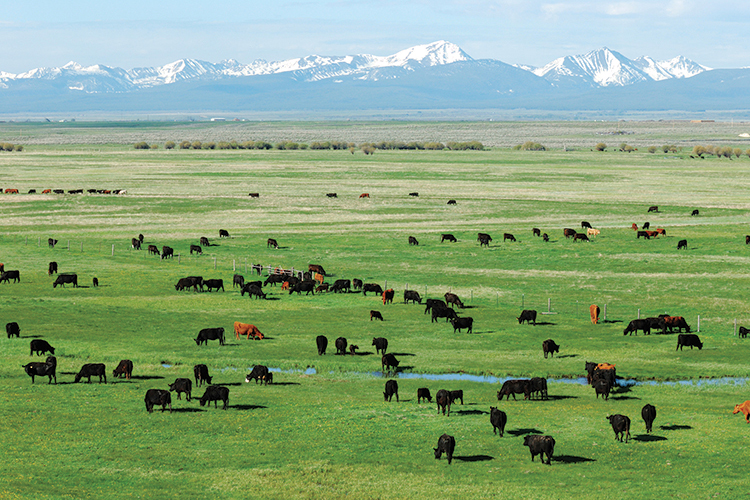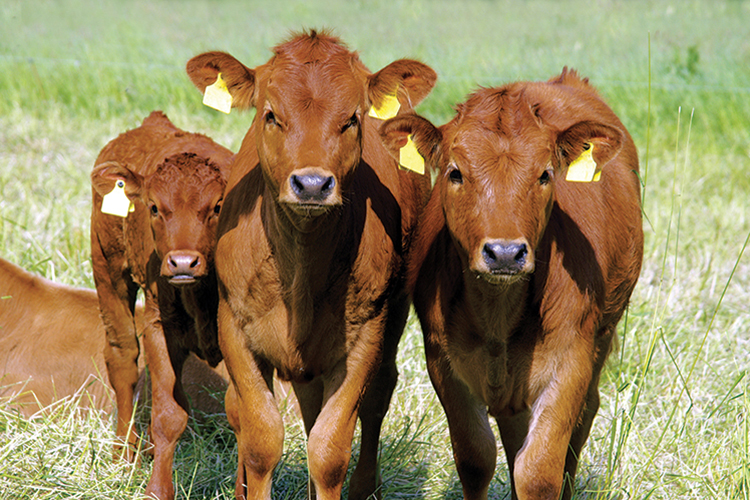Home > Montana > Montana Crops & Livestock > Finishing Beef in Montana
Finishing Beef in Montana

Beef finishing and processing has always taken a backseat to cow-calf operations in Montana. However, in recent years, businesses focusing on the finishing side of beef have become more common, providing consumers in the state – as well as across the country – with the opportunity to eat Montana beef raised and finished here.
In 2014, the number of cattle in Montana outnumbered people 2.5 to 1, but only 45,000 of the 2.55 million cattle in the state were on feedlots. There are about 40 state-inspected meat processing facilities in Montana and two federally inspected facilities.
There is room for growth in Montana’s beef finishing and processing industry – and some creative ranchers, researchers and businessmen are jumping on the opportunity, boosting local economies and providing jobs to area families.
Starting Small
In the tiny town of Terry, which has a population of 600, starting a business that adds four full-time jobs in three years is big news. Travis and Tamara Choat opened Powder River Meat Company in 2012, where they run a feedlot and a small, custom, meat-packing plant that serves mostly local ranchers. They process about five head of cattle per week and about 400 head of wild game per hunting season.
“Terry is a very family- and agriculture-oriented community, and we support and fit into that,” Travis Choat says. “When we first started this, we never expected how much people would help us. Neighbors and family have bent over backward to help us succeed by loaning us tractors, spraying weeds for us and everything in between.”
Choat says Powder River Meat Company provides a valuable resource to hunters and customers who want to raise and eat their own meat, as well as ranchers who want to capture the salvage value of an animal that will not make money in the marketplace.
“Our capabilities make us unique,” he says. “We really focus hard on food safety and try to tie family into it. We’ve got a lot of aspirations to grow.”

Small Town, Big-Time Beef
Another side of the finishing industry features commercial feedlots and grazing, and a newly founded company in Hobson has made a huge impact on the economy of the small town of 500.
Bos Terra, founded in 2011, employs 20 to 25 people annually and buys up to 1.5 million bushels of grain from local farmers to use as feed for its cattle.
“Five years ago, that wasn’t the case in this region,” says Robert Peterson, part owner and on-site manager at Bos Terra, which generally has 12,000 head of cattle on its feedlot and seasonally grazes around 5,000 more on pasture. “Bos Terra provides an alternative market for local grain growers. That’s a big deal.”
Unique Potential
In 2012, a nonprofit called One Montana began a feasibility study to assess the possibility of placing a midsize meat processing plant in the state.
One Montana’s feasibility study revealed potential for a midsize, federally inspected plant that would process beef and sell to higher-end grocery stores all over the U.S. as a 100 percent natural Montana product. The plant would also produce value-added products, such as beef jerky, ground beef, dry fermented sausages – producing “everything from Slim Jims to nice salami,” says Matt Bitz, Program Manager at One Montana. The model is for a 250 head per day facility.
The study found two locations that would be ideal for such a facility: Great Falls, located in the north-central part of the state, and Miles City in the Yellowstone River Basin.
“This has a lot of potential to positively affect our economy,” Bitz says. “If you’re a grain or corn producer, there’s an increased potential to sell feed, and for cattle producers, there’s the potential to sell your cattle – at a premium price – into a Montana-branded beef program. Our research shows there is definitely a demand for Montana beef.”
Bitz says One Montana has done the research to show that this plant is feasible, but the organization cannot build the plant itself.
“We are a nonprofit organization – this will not be a packing house with a One Montana sign out front,” Bitz says. “We’ve been sharing our findings with agricultural interest groups, and now we need investors to come forward and take the project to the next step.”



